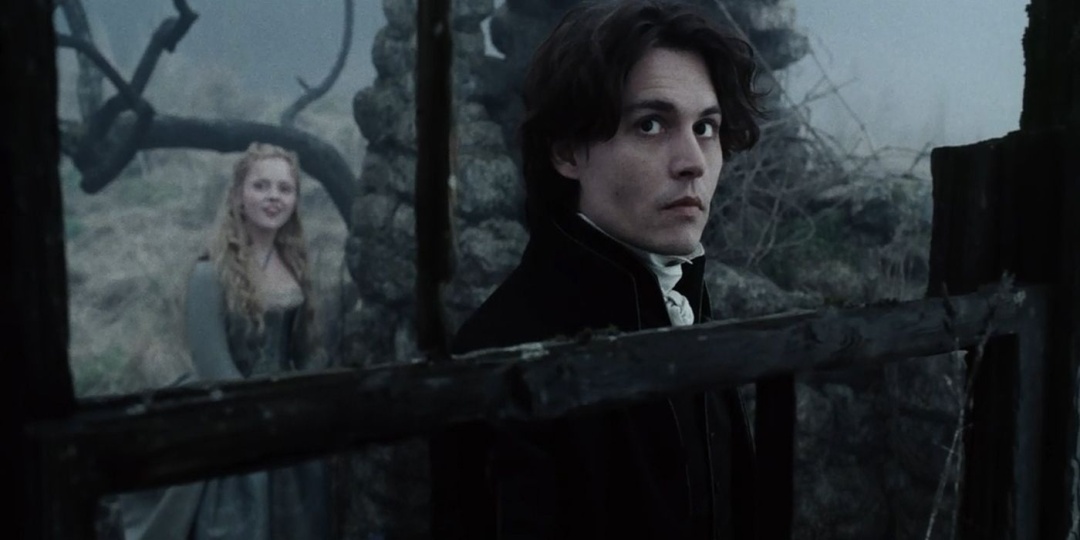At one time, Tim Burton was one of Hollywood’s hottest new directors, bringing dark visions to commercial films and creating beautifully gothic fairy tales and superhero epics. However, while he was one of the most sought-after directors in the late 1980s and throughout the 90s, Burton, once a unique visionary, has drifted far from the shore.
After achieving massive success with his first several films, Pee Wee’s Big Adventure, Beetlejuice, and Batman, Burton created his most personal film, and, what some call his masterpiece, Edward Scissorhands. It was a type of film that no one had seen before. It creatively juxtaposed dark gothic worlds with modern suburbia and featured a unique and outcasted protagonist.
He followed that up with his other masterpiece, Ed Wood, which featured Johnny Depp as the infamous B-movie director. Following creative and critical success, Burton went more comical with Mars Attacks, a clever send-up of the type of B-movies he profiled in Ed Wood. The film was not well received despite its star-studded cast, but remains an underrated gem.
Burton would then sign on to direct Superman Lives, starring Nicholas Cage as the Man Of Steel, however, infamously, the project never got off the ground. Following this disappointment, Burton took on Sleepy Hollow instead, which fit more in his wheelhouse and would perhaps be his final good film.
Scripted by Seven’s Andrew Kevin Walker, Sleepy Hollow was a modest hit when it opened in November 1999. The film is a reimagining of The Legend Of Sleepy Hollow, updated to be a murder mystery with Johnny Depp’s Ichabod Crane now a detective instead of a school teacher. Sleepy Hollow concerns Constable Ichabod Crane sent to Sleepy Hollow to investigate a series of decapitations the local God-fearing townsfolk believe to be the work of the legendary Headless Horseman.
Burton made the film as an homage to the great Hammer horror films, and even features a cameo by Christopher Lee.
Aside from Edward Scissorhands, Sleepy Hollow remains Burton’s most visually stunning film. Lensed by master cinematographer, Emmanuel Lubezki, who hadn’t yet made a name for himself in America at the time (his three consecutive Oscars would come many years later), the film is a gothically photographed nightmare where the sun never shines and seemingly every shot is blanketed in fog.
In post-production, the film even went through a process called “bleach bypass,” which saturates the image, takes the life out of it, and makes every human character pale as a ghost (to see how the film was initially shot, watch the original trailer to see more color in the actor’s faces).
Besides the image, the design of the film is horrific, from the twisted trees to liberally applied thick, dark red blood. Even composer Danny Elfman’s score is a career-best, as with the music he provides as much atmosphere to the movie as the cinematography does, crafting haunting and terrifying melodies that are almost a character in themselves.
There is so much to love in Sleepy Hollow, from Christopher Walken’s horrifying and monstrous cameo as the horseman to the incredible practical effects, such as when the Headless Horseman on horseback leaps out from underneath the “Tree of Death” which, like many frames in the film, could be its own gothic painting.
While the film does have some weaknesses like Christina Ricci’s lifeless line readings, Crane’s backstory that ultimately goes nowhere, and the fact that the horseman is being controlled instead of acting on his own, Sleepy Hollow remains an endlessly watchable film that’s both thrilling and, at times, darkly haunting – this was Burton’s first R-rated film.
Sleepy Hollow harkens back to a time when Burton was truly putting his offbeat touch on commercial films. Nowadays, Burton’s style has been copied so much that his more recent films have felt as if they were Burton knockoffs.
After Sleepy Hollow, Burton directed the poorly conceived Planet Of The Apes remake, and followed that up with the crowd-pleasing Big Fish. Audiences enjoyed Big Fish but, while it has a lot going for it, it’s Burton’s inability to adequately do sentimentality that holds it back from being a truly great film.
More Burton disappointments in the years that followed would be Charlie and The Chocolate Factory, Sweeney Todd, Alice in Wonderland, and the disastrous Dark Shadows. His most recent output was Dumbo, which bombed, and he currently has no movies in development.
His next project is directing a Netflix original series centered around Wednesday Addams of The Addams Family, which is ironic as the original Addams Family film is clearly a Tim Burton knockoff, and he’s actually been considered for years to direct an adaptation of the classic TV series. While this project is perfect for Burton’s sensibilities, it would be better if he focused on creating new original works like Edward Scissorhands instead of putting his stamp on projects that already fit his style.
It is unfortunate that someone so talented and starkly unique hasn’t been able to deliver something new and exciting in his own brand. Despite his acclaim, Burton has always been criticized for being style over substance, however, it’s movies like Sleepy Hollow that prove that sometimes that’s all you need to make an entertaining film.



